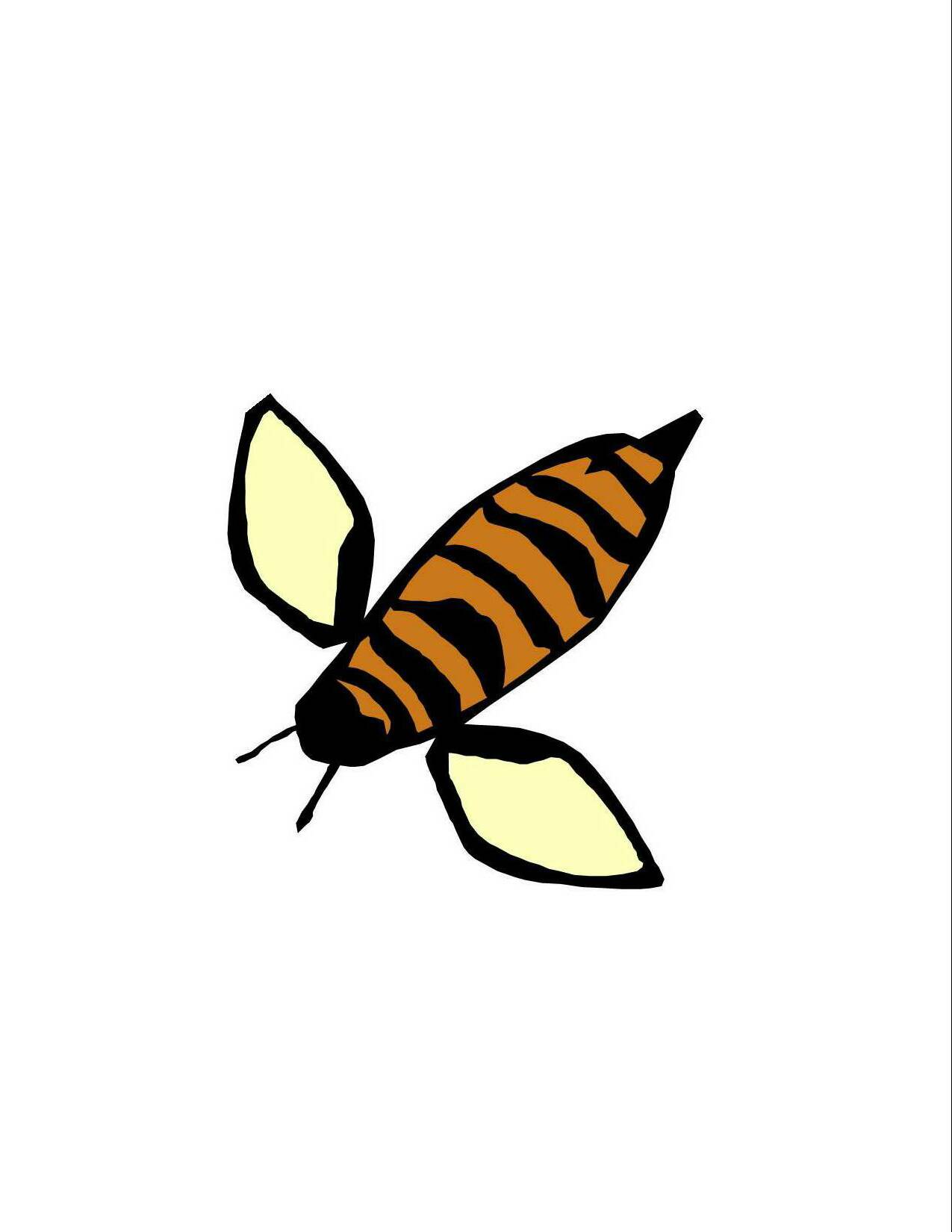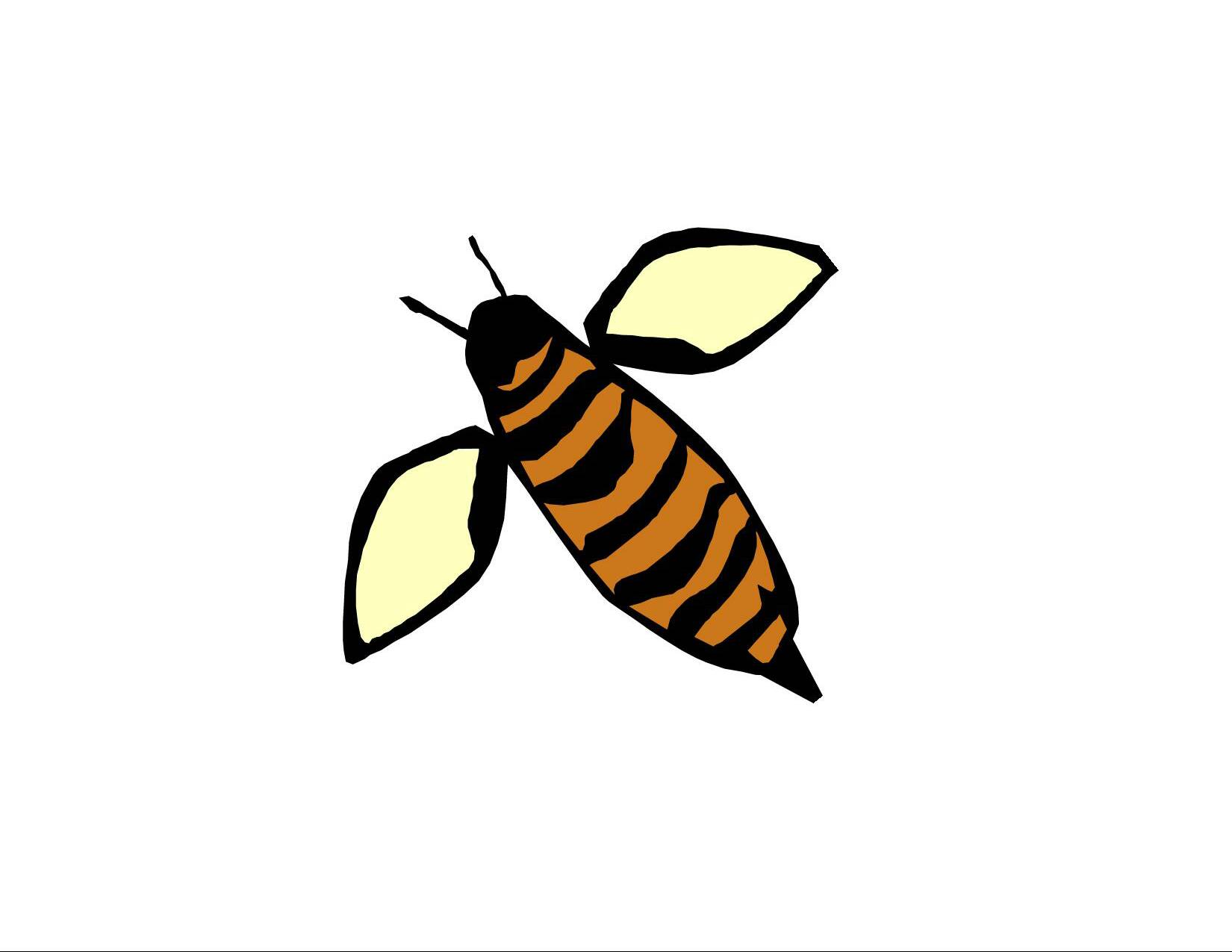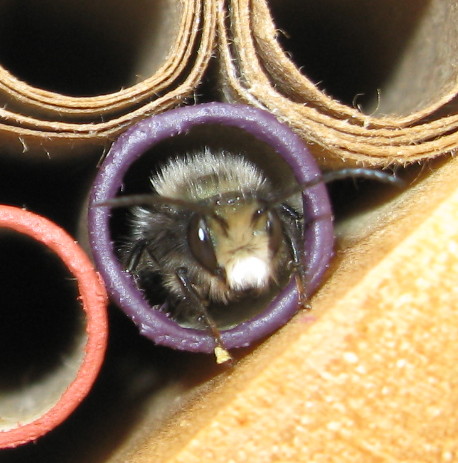DID YOU KNOW? Each female Mason Bee can lay six or seven eggs per 6" nesting tube.
C
MONARCHS & MILKWEED
HUMMINGBIRDS
JUST FOR FUN
SPONSORSHIP PROGRAMS
POLLINATION STATION
POLLINATION
 | ||||
Support your native pollinators!
THE MASON BEE PROJECT
HAS BEGUN!
After a little research we ordered our Mason Bees which arrived in a dormant state mid November. Here, in protective cocoons, are fully formed adults waiting for warm weather to arrive. Stored in our refrigerator during the cold winter months, we set them out in little cardboard boxes (also shown) near our Mason Bee house when the fruit trees started to bloom. It's a very different process from maintaining our honeybees.
 | ||||
Mason Bees...
- are solitary. There is only one bee per nest, not thousands.
- are native to North America whereas honeybees are not.
- rarely sting.
- are early spring bees & emerge about the time cherries bloom.
- fly at a low 54 degrees F. Honeybees fly at 57-59 degrees F.
- forage earlier in the morning and later in the afternoon than honeybees.
- use holes in wood or nesting tubes for egg laying
- are low maintenance and require only a small bee house with a VERY low start up cost!
Have you planted YOUR milkweed, yet? }i{
Some Mason Bee Facts You Might Like to Know!
- A few Mason Bees can build to a population of several thousand pollinators in a couple of years
- A few hundred Mason Bees can do the same work as many thousands of honeybees
- Slightly smaller than honeybees, Mason Bees are fuzzy little bees with blue or green metallic coloring
- Mason Bees look for existing holes in wood to use as their nests rather than excavate their own
- Mason Bees will readily use artificial nesting sites made by bundling special paper straws or drilling holes in a block of wood
- Mason Bees are best known for pollinating fruit crops. Almonds, blueberries and apples are amongst their favorites blossoms
- Mason Bees will thrive in urban areas
- Mason Bees are a perfect addition in small numbers to the average backyard garden
- Mason Bees are only active for about a month each year. They mate and reproduce during the month after they emerge and die after assuring the next generation is safely tucked away in the nursery tubes
The most important contribution of bees to the economy and the environment is their pollination of fruits, vegetables, and pasturage.
 | ||||
We made these adorable Mason Bee houses for a recent fund raiser and they sold out almost instantly! Dan agreed to make more for gift giving (or yourself) if anyone is interested. For $18, each house is hand crafted and includes the hand rolled (that's Luanne's job) nesting tubes, instructions and is decorated with a cheery to/from card. We can work out shipping arrangements if you don't live locally.
SEVERAL REASONS TO GIVE MASON BEES A TRY!
Would you like to try your hand with Honeybees but are overwhelmed by the project or concerned with regulations in your neighborhood?
 | ||||
These folks really know what they are talking about. Mason Bee Q & A here!
 | ||||
Here, a male Mason Bee takes shelter during a chilly day and faces the warm sun. Males emerge before females and fly around the entrances to the bee house waiting to mate. Once mated, a female will set to the task of laying her 34-36 eggs-about 6 in each tube-within the month she will live. A bit of color on the end of the paper tubes helps the female navigate.
IN THE MEADOW



